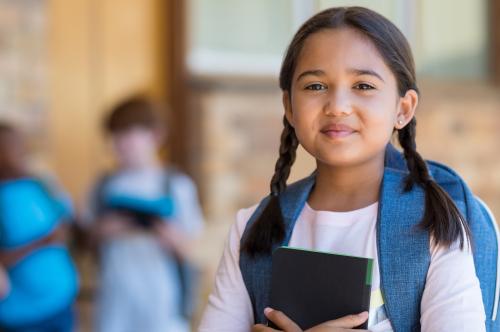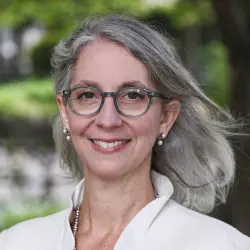With COVID-19 cases on the rise, families and schools across America face an extended period of educational disruption. Recent research illustrates the toll that this upheaval has had on our nation’s young people. In a nationally representative survey of high school students, one-third of young people reported being unhappy or depressed. Projections of learning loss on math and reading due to COVID-19 show that educational disruptions will likely result in negative effects, especially for students who were already behind. Low-income students and students of color, who have historically been poorly served by our education systems, are being hit particularly hard.
Yet perhaps one silver lining out of this crisis, as argued in the recent Brookings report “Beyond reopening schools: How education can emerge stronger than before COVID-19,” is the increasing recognition that transformation is urgently needed in the country’s schools. We know that children learn better when their physical and socio-emotional needs are met, when they can apply what they are learning to real-life situations, and when they have strong relationships with caring adults. The pandemic has unleashed the energies and contributions of a wide range of actors outside the school walls—from families to food banks to employers—who can be powerful education allies for supporting the holistic development of young people if we structure our education systems for partnership and collaboration. Harnessing this energy to promote whole-child development, especially through the scaling up of a community schools approach, is one way to tackle the growing education inequality.
What are community schools?
In community schools, every family and community member is an asset that can be leveraged to build on students’ strengths, engage them as learners, and enable them to reach their full potential. The community schools movement has long envisioned schools as the hub of children’s education and development, powered by shared leadership between schools and families and strong partnerships between health, social welfare, employers, and other sectors. Historically, community schools have their roots in the progressive education movement in the early 1900s, including John Dewey’s argument for schools as social centers. Over the last century, the vision of community schools has evolved, and the education field now uses various terms, such as “integrated student supports” or “wraparound supports,” to describe the underlying approach. Today there is a growing network of education stakeholders working to advance “next generation community schools.”
The evidence in support of community schools
We know that community schools enable students to succeed. A growing body of research shows that the community school strategy, which includes integrated supports, helps students attend school more often, feel safer in school, and graduate on time. A multiyear impact study of the New York City Community Schools initiative reports on a significant reduction in student chronic absenteeism early on, and later, an increase in academics and graduation rates for all students, which was particularly true for students in temporary housing and Black and Brown students. Further evidence that summarized the research from 143 studies on community schools found that students benefitted from integrated supports, parent engagement, and expanded learning opportunities. A Child Trends review of rigorous evaluations of integrated student support initiatives found promising results and strong alignment of this approach with research on child and youth development. Community schools prioritize integrating social, emotional, and academic learning, which has been identified as critical to improved student outcomes. Amid the hardships of COVID-19, community schools have readily adapted to changing conditions and needs, devising innovative mechanisms to deliver food, technology, health care, and other essential services to support student learning and well-being.
Addressing education inequality by scaling the community schools
Despite the accumulating evidence behind community schools and the increasing urgency to find new approaches to address inequality, support for a community schools approach across federal, state, and local governments remains inconsistent and insufficient. Today there are between 8,000-10,000 community schools in the country, which represent between 6 to 8 percent of all the country’s schools. While in recent years the movement has focused less on supporting individual community schools or small networks of community schools and looked more toward districtwide adoption, much more needs to be done to provide a systemwide enabling environment for uptake. Today there are only a handful of cities, including New York City, Cincinnati, and Oakland, that have adopted community schools as a preferred reform strategy to promote whole child well-being, student success, and educational equity. Recent roadmaps for transforming education after the pandemic, including from the Learning Policy Institute, call for the community school approach to be much more widely used. Ultimately, the scaling of community schools to every school and community will require a shared understanding of the community school strategy among funders, policymakers, and practitioners and the intentional alignment of resources and policies around that common vision.
The Task Force on Next Generation Community Schools
It is in this spirit of reimagining what schools can do that we are launching the Task Force on Next Generation Community Schools. The task force, which is comprised of a group of individuals ranging from experienced educators and practitioners to key decisionmakers in education policy, will identify what it would take at the federal, state, and local levels to successfully invest in and scale Next Generation Community Schools to every neighborhood across America. The findings will be released in a report in early 2021 with the goal of shaping our educational recovery out of the COVID-19 crisis, and, as a first step, initiating the implementation of community schools in the neighborhoods hardest hit by the pandemic.
Ultimately, the pandemic has shown the power and potential of community schools to serve as a source of community strength and adaptiveness. The Next Generation Community Schools Task Force will create innovative environments for learning that promote educational equity and community resilience, and improve whole-child outcomes, including academic performance, health, and social and emotional well-being. By further investing in the resources and capacities needed to build strong communities within schools, between schools and families, and in the neighborhoods where students live, Next Generation Community Schools can serve as the engines of strength that help our nation ably face its future challenges.
We are grateful to our task force members, listed below, for their time and commitment to collectively moving this agenda forward:
Robert Balfanz, Director, Everyone Graduates Center, Johns Hopkins University
Richard R. Buery, Jr., President, Achievement First
Hedy Chang, Executive Director, Attendance Works
Leslie Cornfeld, President and CEO, National Education Equity Lab
Linda Darling-Hammond, Charles E. Ducommun Professor of Education Emeritus, Stanford University; President, Learning Policy Institute (LPI)
Abe Fernández, Vice President of Collective Impact and Director, National Center for Community Schools, Children’s Aid
Kristen Harper (Task Force Vice Chair), Director of Policy and Outreach, Child Trends
Reuben Jacobson, Senior Professorial Lecturer and Director of the Education Policy and Leadership Program, American University
Sarah Jonas (Task Force Chair), Executive Director, Office of Community Schools, New York City Department of Education (NYCDOE),
John King Jr., President and CEO, The Education Trust
Kristin Anderson Moore, Senior Scholar and Past President, Child Trends
Jose Muñoz, Director, Coalition for Community Schools, Institute for Educational Leadership (IEL)
Jeannie Oakes, Presidential Professor Emeritus in Educational Equity, University of California, Los Angeles; Senior Fellow in Residence, Learning Policy Institute (LPI)
Andre Perry, Fellow, Metropolitan Policy Program at the Brookings Institution
Sarah Peterson, Director of Research and Development, Office of Community Schools, New York City Department of Education (NYCDOE)
Gema Quetzal, Next Generation Coalition Co-Chair, Coalition for Community Schools, Institute for Educational Leadership (IEL)
Jane Quinn, Director 2000-2018, National Center for Community Schools, Children’s Aid
Todd Rogers, Professor of Public Policy and Director of the Student Social Support R&D Lab, Harvard University
Ian Rosenblum, Executive Director, The Education Trust-New York
Robert Runcie, Superintendent, Broward County Public Schools
Rey Saldaña, President and CEO, Communities in Schools
Scott Sargrad, Vice President of K-12 Education Policy, Center for American Progress (CAP)
Kyle Serrette, Senior Policy Analyst, National Education Association (NEA)
Tony Smith, Founder and CEO, Whyspeople
Tony Thurmond, State Superintendent of Public instruction, California Department of Education
Anne Wicks, The Ann Kimball Johnson Director of the Education Reform Initiative, George W. Bush Institute
Rebecca Winthrop (Task Force Vice Chair), Senior Fellow and Co-Director, Center for Universal Education at the Brookings Institution
Dr. Brian T. Woods, Superintendent, Northside Independent School District
Sheena Wright, President and CEO, United Way of New York City
The Brookings Institution is committed to quality, independence, and impact.
We are supported by a diverse array of funders. In line with our values and policies, each Brookings publication represents the sole views of its author(s).










Commentary
Education inequality, community schools, and system transformation: Launching the Task Force on Next Generation Community Schools
November 10, 2020